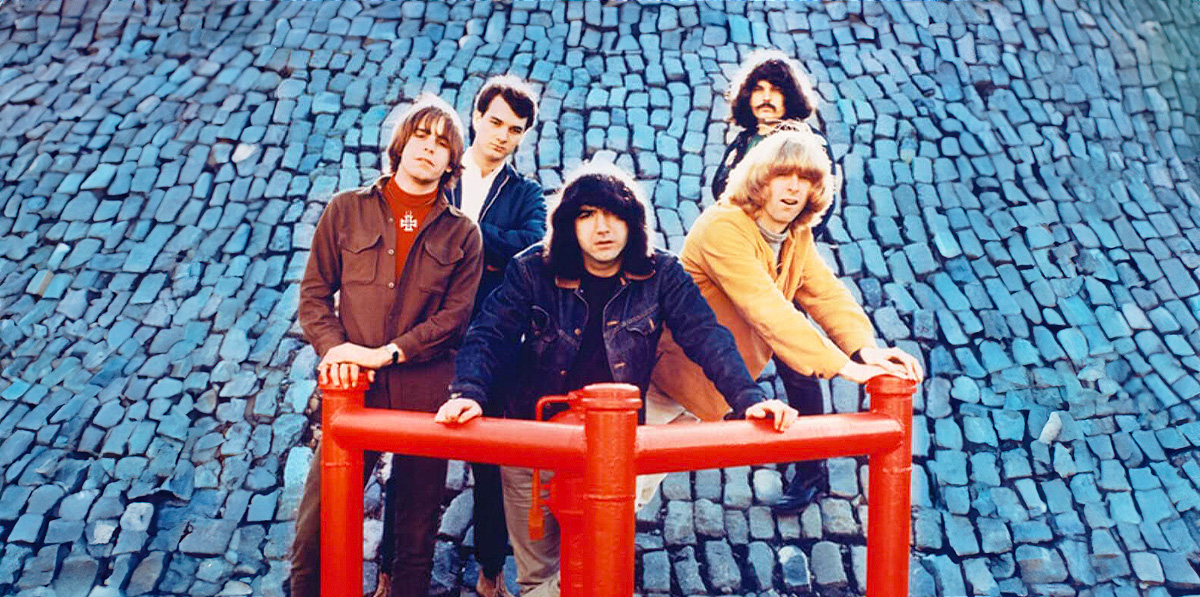“I Know You Rider” galloped into Grateful Dead lore at the dawn of the group’s creation, and remained in their stable of songs for the next 30 years. But the blues standard’s place in the pantheon wasn’t assured until late 1969, when it joined forces with the Jerry Garcia/Robert Hunter original “China Cat Sunflower” to illuminate the psychedelic folk path the Dead would continue to explore on the landmark studio albums Workingman’s Dead and American Beauty.

While the origins of “I Know You Rider” are unknown, musicologist Debra Devi states that in blues parlance, a rider is a sexual partner or steady lover. “Riding is probably the most common metaphor for sexual intercourse in blues,” Devi writes. “Using a condom is ‘riding with the saddle on.’ If a woman has sex with several men in a row, she is ‘riding the train,’ and her last partner is ‘the caboose.’ ‘Riding the train’ can also mean to use cocaine.”
Folksinger and scholar Bob Coltman is credited with resurrecting “I Know You Rider” while attending Dartmouth College during the late 1950s. Coltman discovered the song in the pages of father-and-son musicologists John and Alan Lomax’s seminal 1934 volume American Ballads and Folk Songs, where it appears under the title “Woman Blue.” “An eighteen-year-old Black girl, in prison for murder, sang the song and the first stanza of these blues,” the Lomaxes state, noting their published version added a number of floating verses drawn from other sources.

“I followed the tune given in Lomax, roughly but not exactly, changed [‘I Know You Rider’] from a woman’s to a man’s viewpoint, dropped two verses, and was its first arranger, voice and guitar in a heavy drag downbeat, sort of an early folk-rock sound,” Coltman writes. “I sang it a lot in folk circles around Philadelphia, in concerts, around Boston, mostly at the legendary Old Joe Clarke’s, and in Dartmouth Outing Club hiker/climber/skier circles, which took me around New York State and New England circa 1957-60. I also sang it in the west, in Wyoming/Tetons ‘Teton Tea Parties’ and on the West Coast, especially in San Francisco and Los Angeles, late summer-early fall ’59. Then I went in the Army (sorta like prison) and everything went on hold.”
Harry Tuft, the venerable folk musician best known for launching the Denver Folklore Center, corroborated and expanded Coltman’s account. “Bob and I were classmates at Dartmouth and met through the folksong club there,” Tuft writes. “I sang [‘I Know You Rider’] around Philadelphia, taught it to Tossi Aaron [who recorded it in 1960 for her LP Tossi Sings Folk Songs & Ballads], and when journeying to New York I met [folksinger] Karen Dalton [and] I taught it to her. Then I taught it to John Phillips [later the founder of the Mamas and the Papas, as well as the author of the Dead staple “Me and My Uncle”] at the time when the Journeymen were forming… I believe that they learned it and sang it, although it never made it to a recording. In Colorado I taught it to [singer/songwriter] Judy Roderick, who adapted it and combined it with another blues song with similar lyrics. The rest is history.”

Although Joan Baez, Judy Henske and the Big 3 also recorded “I Know You Rider” during the early 1960s, the now-familiar Grateful Dead rendition most closely resembles the version Tuft bequeathed to Phillips and fellow Journeymen Dick Weissman and Scott McKenzie, the latter of whom would go on to perform the counterculture anthem “San Francisco (Be Sure to Wear Flowers in Your Hair).” “John had that gift of arrangement, and so from that very simple, straightforward [version derived from Coltman], he just added a few chords,” Tuft told the Good Ol’ Grateful Deadcast in 2022. “That really made all the difference. And it’s the fact that he added those chords to what is now the way the song is sung today that really is the proof that this was the lineage of ‘I Know You Rider.’”
Brent Wood’s The Tragic Odes of Jerry Garcia and the Grateful Dead: Mystery Dances in the Magic Theater adds that Garcia also borrowed from the arrangement of “I Know You Rider” featured on Vince Martin and Fred Neil’s 1964 LP Tear Down the Walls. “[The album] included ‘Morning Dew’ and a bluesy version of ‘Know You Rider’ which caught the attention of [future Dead road manager] Laird Grant, who passed it on to his friend Garcia,” Wood writes. “The folk-banjoist-turned-electric guitarist responded by revisiting the chord progression he had been using for ‘Know You Rider’ and developing a new arrangement for ‘Morning Dew,’ both based on Neil’s recording.”

The Grateful Dead — then still known as the Warlocks — adopted “I Know You Rider” immediately after forming in early 1965 from the ashes of the Palo Alto, Calif. jug band Mother McCree’s Uptown Jug Champions, and recorded the song that November at San Francisco’s Golden State Recorders (a session officially released in 2001 as part of the retrospective Birth of the Dead). “I Know You Rider” was a staple of the Dead’s live repertoire throughout 1966, with Phil Lesh singing lead and Bob Weir contributing harmonies; these early versions of the song are bouncier and more energetic than subsequent performances, complete with an additional verse (“I’d drink muddy water/Sleep in a hollow log/Than stay here in Frisco/Be treated like a dog”) that would eventually go MIA. The Dead’s Avalon Ballroom performance from Sept. 16, 1966 (included in the So Many Roads box set) provides the first documented evidence of another evolution, the climactic “I wish I was a headlight on a northbound train” verse; its exact lineage is unclear, although the lyric may come from folk legend Odetta’s version of the traditional “Easy Rider,” recorded for 1957’s Odetta Sings Ballads and Blues.

The Dead apparently considered “I Know You Rider” for inclusion on their self-titled Warner Bros. debut LP, recorded in January 1967, but only completed an instrumental track before moving on to other material. From there, the song vanished from the Dead’s setlists for close to three years before resurfacing on Sept. 30, 1969, when it segued out of a performance of the Aoxomoxoa track “China Cat Sunflower” during a show at New York City’s Cafe au Go Go. The result was kismet: “China Cat Sunflower” and “I Know You Rider” (both with Garcia singing lead) would remain all but inseparable for decades to come, appearing as a matched set across more than 500 live dates, often as a second-set opener. The so-called “China > Rider” (a shorthand moniker developed in tape trading circles) highlights more than a few all-time Dead performances, including Paris’ Olympia Theater on May 3, 1972 (the version featured on the classic triple live album Europe ’72) and the Philadelphia Civic Center on Aug. 4, 1974 (compiled on Dick’s Picks Volume 31).

“Everything we ever did was a demonstration of the value of cross-fertilization,” Lesh told Rolling Stone in 2005. “It was unconscious at first, but when we started looking at each other, we had all these different influences. We had classical, jazz and avant-garde electronica in my case; we had rock and roll, bluegrass and folk music in Jerry’s case; we had rock and roll and folk music with Bobby; we had blues and R&B with Pigpen; and we had jazz and rock and roll with Billy. The first song we ever did was an old folk song [“I Know You Rider”], and we rocked it out. Then we took a jug band song [“Viola Lee Blues”], and we electrified that and rocked it out. I used to think of our music as electric chamber music. Bobby used to call it electric Dixieland.”






